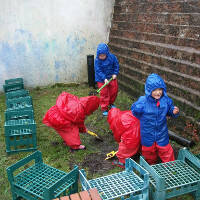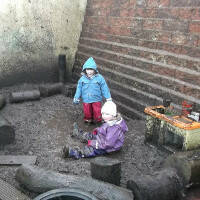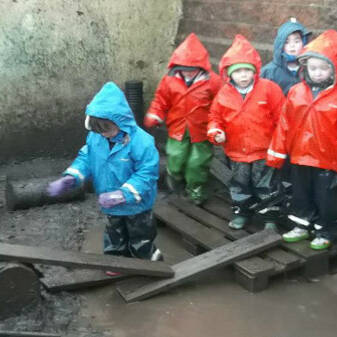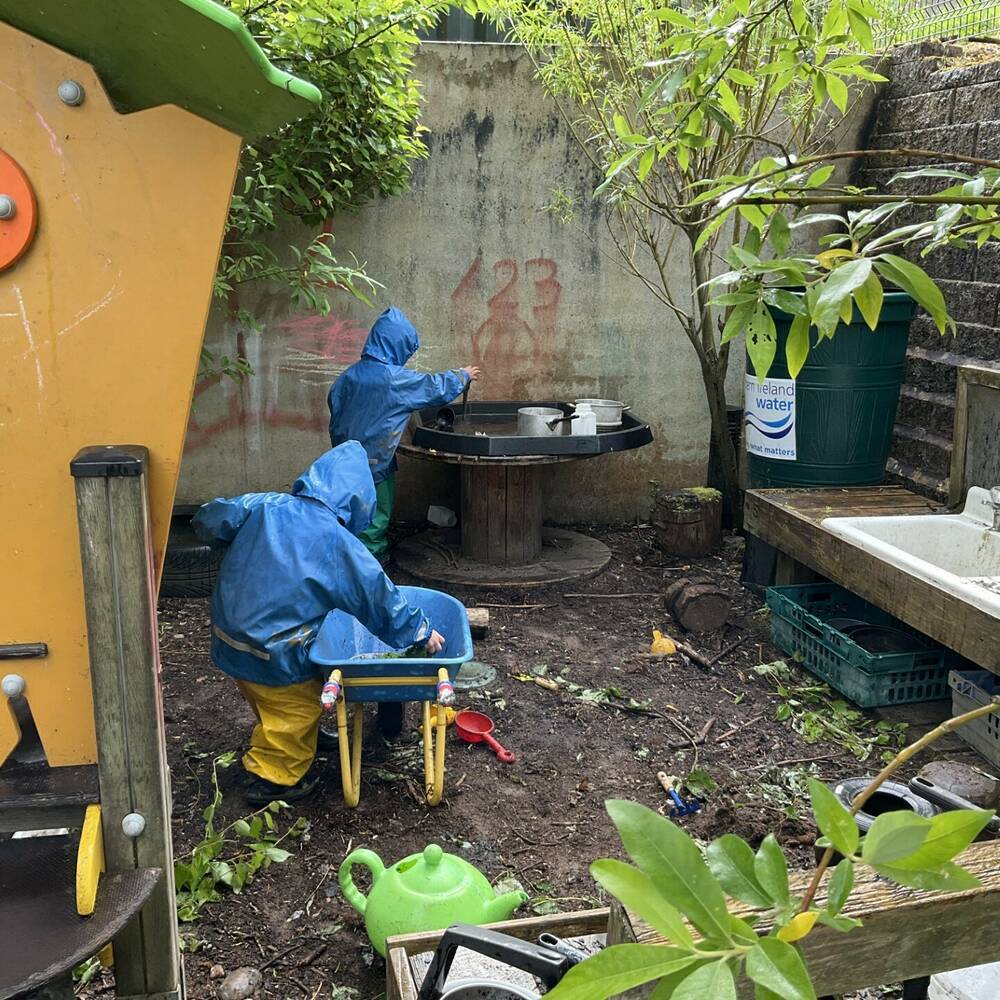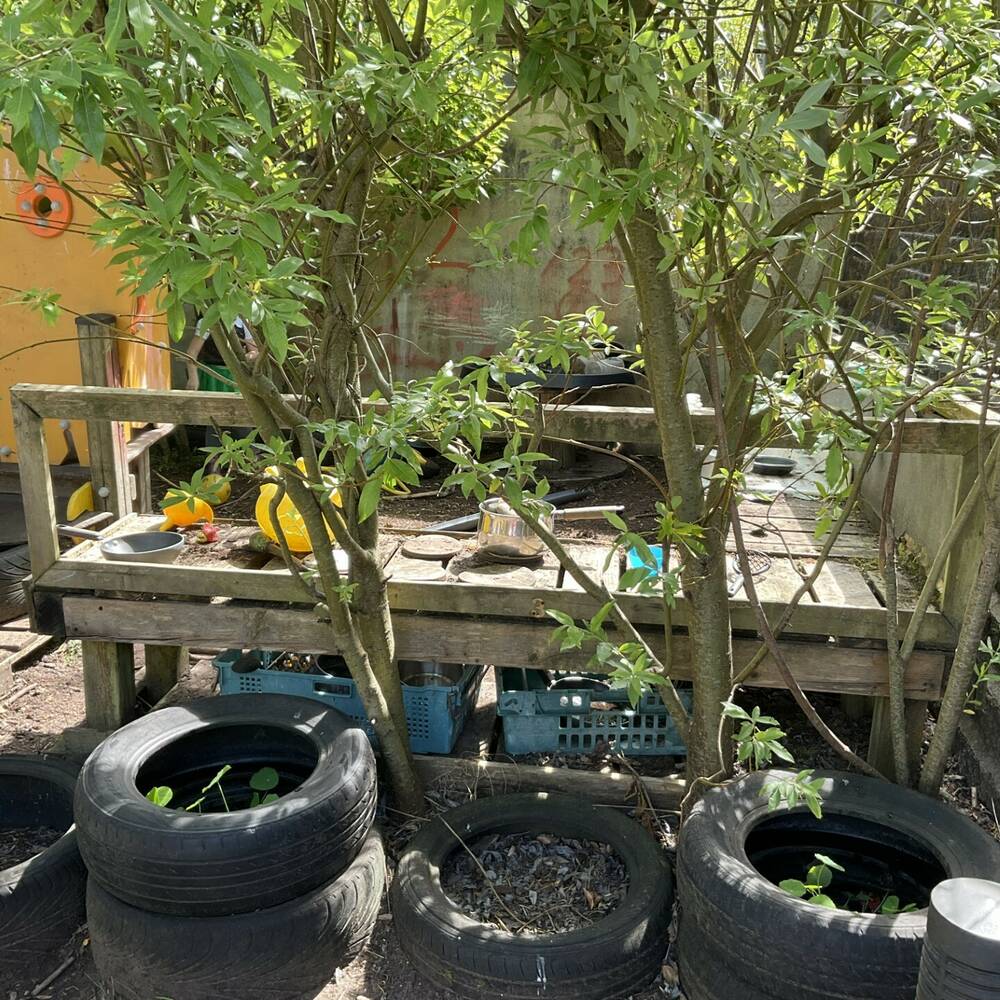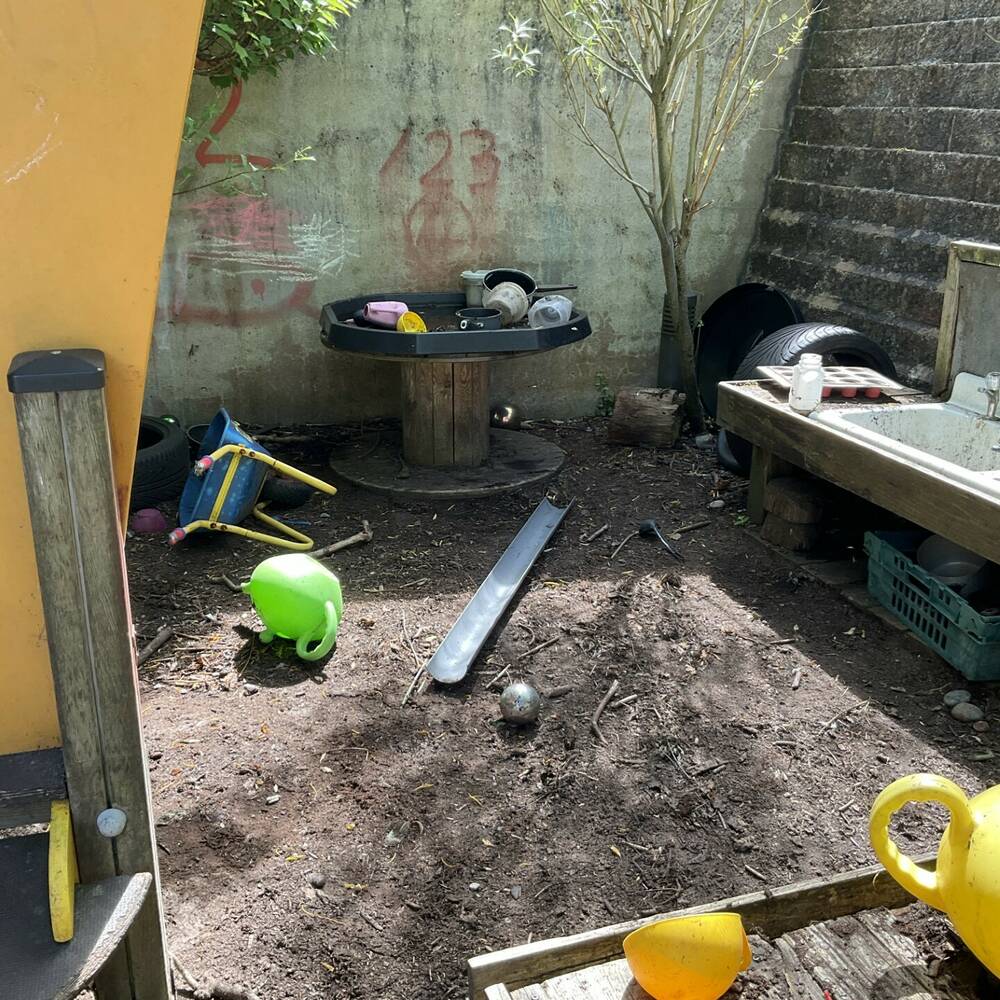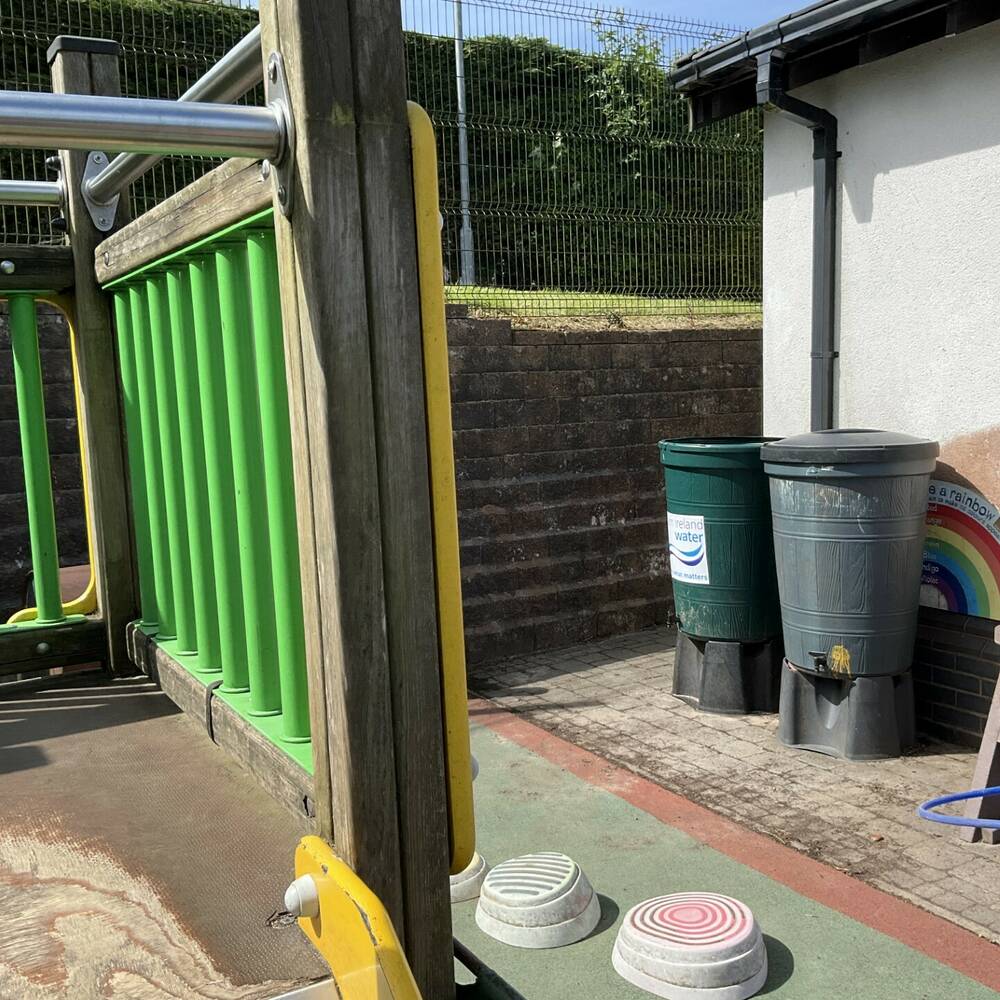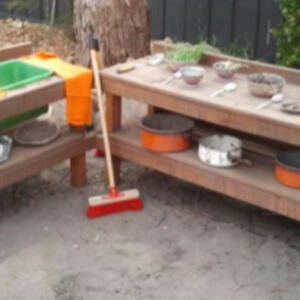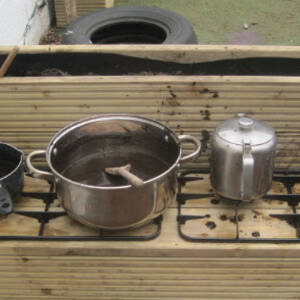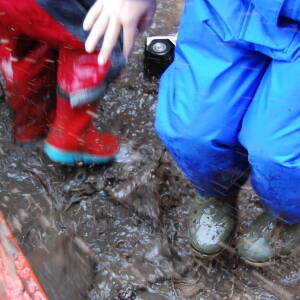Case study: mud patch in NI + UPDATE 10 years on
Creating and maintaining a muddy digging patch was a priority at this newly-built primary school.
10 years on, what has changed?
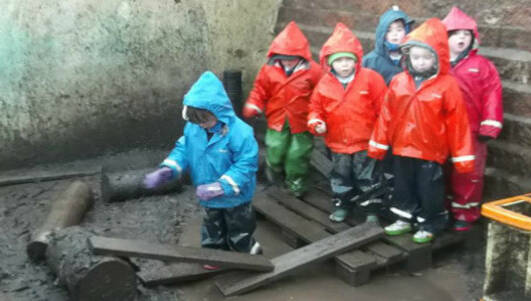
Introduction
Mud Pit at Windmill Integrated Primary School, Northern Ireland
Age of children: 3 & 4 years
Author Kierna Corr - Head of Nursery & Northern Ireland Representative for the World Forum of Early Care & Education
Website: nosuchthingasbadweather.blogspot.com
Twitter: @CiarnaC. Facebook page: Learning for Life
UPDATE
We're delighted that, 10 years on, Kierna has sent us an update - a great opportunity to see how a project changes and develops over time.
What you'll need
- mud
- children
This activity has been provided by

Environmental Considerations
Consider the environmental impact of preparing, carrying out & completing this activity. Could this impact be reduced? Specific considerations for this activity could include:
- maintenance of mud patch after holidays
Health & Safety Considerations
Follow your usual operating procedures and carry out appropriate risk benefit assessments.
Some considerations particular to this activity include:
- depth of mud pit
Original case study, approx 2010
When we moved into our new purpose built school in 2006 I had expected to have soil with grass seed & had talked to the children about being able to dig in the mud. I had them all bring in a pair of wellies to keep in school.
So I was actually disappointed when the architect surprised us by providing roll out, instant grass instead. As you can imagine the children were upset too! So we decided to set aside a part of the grass area as a digging patch – this was no easy feat for the children as it took a lot of digging to break through the net that the roll out grass comes in.
However within a few days they had created a large rectangular area where they could dig away. This ‘mud patch’ grows & shrinks throughout the year, depending on the weather etc. Every September it has to be re-dug over by a whole new set of children as it goes wild over the two month summer break.
The children are settled into nursery in two small groups of thirteen & this four-week settling in period provides a perfect opportunity for the parents to see how much fun the children have in the mud patch.
We ask the children to wear their ‘rain gear’ (waterproof clothing) when in the mud patch so the parents have no problem with them getting muddy & dirty as they know their own clothes will be totally protected.
We do find that the mud patch is usually most popular early in the school year when it is obviously a novelty to have such freedom to dig & get muddy, and also when the weather is wetter thereby providing deeper mud!
For anyone thinking of introducing a digging area or mud patch to their playground, I would advise them to go ahead & do it, The children will have so much fun in there – you’ll wonder why you didn’t have one from the start.
The Evolution of a Mud Patch
update - 10 years on
In 2013 our mud patch had become dangerous, the children had dug such a deep hole there was a chance of someone drowning in it. We had to take the decision to cover the mud patch over and try to create a mud kitchen instead.
We got some tyres and balanced a pallet on the top to create a ‘cooking area’. A childcare student had her dad make us an even better option with a couple of pallets that we could put bowls into to gather water and make potions.
That year I was fortunate to visit settings in Iceland through Play Iceland and Fafu and met up with some inspirational Early Years folks from across the UK, Iceland and America. In 2014 one of them, Martin Besford, from the amazing Highway Farm Activity Centre outdoor preschool, came to visit with me and spend time with my nursery class. Martin likes to leave something behind when he visits and decided he was going to build us a mud kitchen with the help of a parent. They built us a deluxe mud kitchen and 10 years on it is still going strong and is one of the most popular parts of the playground especially at the start of the school year and on wet days.
Play in a mud kitchen (like any other area of a playground) ebbs and flows, it only takes one child to show an interest in playing in there for a few more to join them. We have added a tuff tray on a cable reel to allow the children to have access to water when it rains, as well as having 2 water barrels, one fitted to a down pipe and one just open to catch any rain water. The children enjoy playing in there on very dry days too, mixing bark chips with leaves and petals to create soups and stews.
Our mud kitchen is not pristine or pretty and nor do we set it up each day to look enticing, the children are drawn to it because they can fill and pour on a larger scale than in a small water tray and they can get messy. Some love just filling a saucepan with water and dirt to cook with whilst others like using basters to move water from one area to another.
We provide waterproof clothing for all the children, they call it their ‘rain gear’ and as we have removed many of the transitions in the day they can spend hours in the mud kitchen or decide after dinner to go in there. We have two dinner sittings in smaller groups of 13 or 14 so they have a choice of when to go and if really engaged in the mud kitchen they know they go for dinner ‘next time’, giving them time to come to terms with the idea of leaving this space.
The mud kitchen is now over 10 years old and will need to be replaced at some point soon but we will definitely be keeping a mud kitchen in our outdoor area for a long time to come
Disclaimer: Muddy Faces cannot take any responsibility for accidents or damage that occurs as a result of following this activity.You are responsible for making sure the activity is conducted safely.
Key Features
- Age Range All Ages
- Duration Long Term Project
- Location Anywhere
- Season Any
- Time of Day Anytime
-
Categories:
Outdoor Play
mud kitchen case studies
